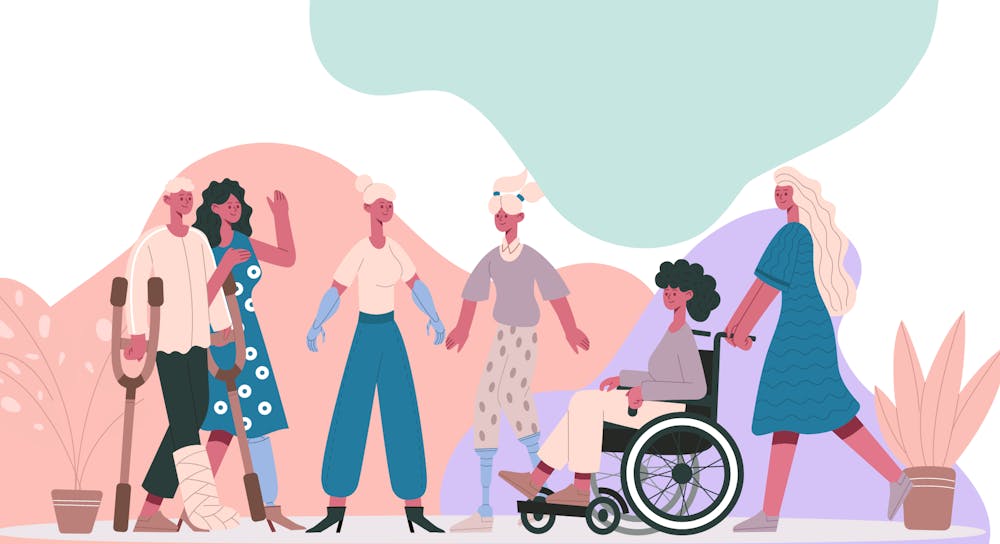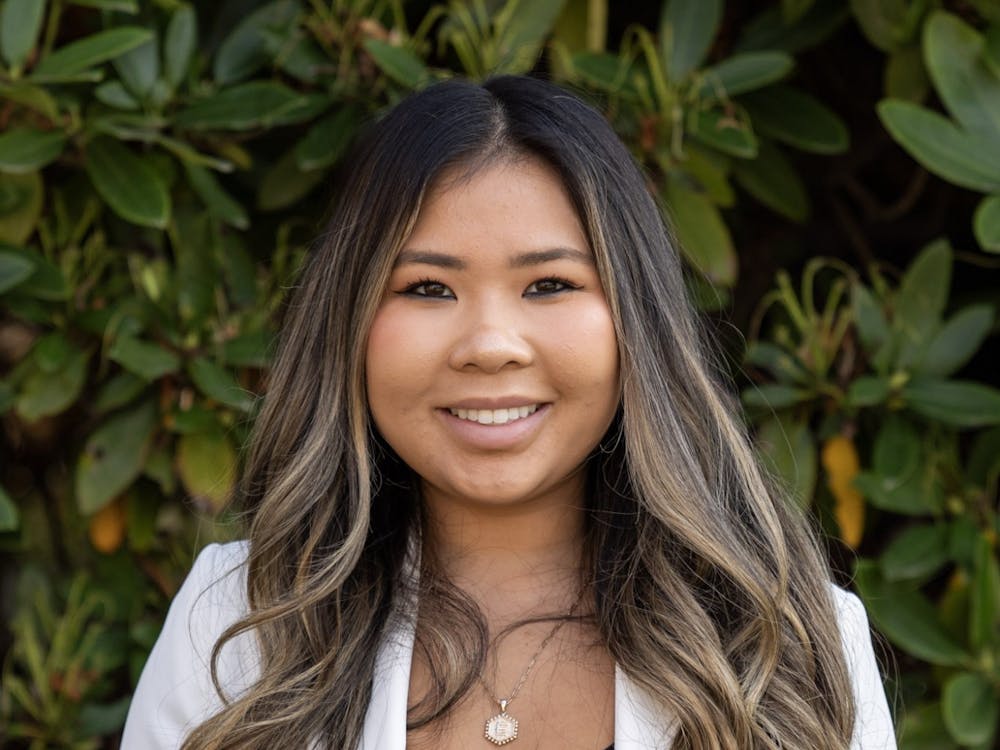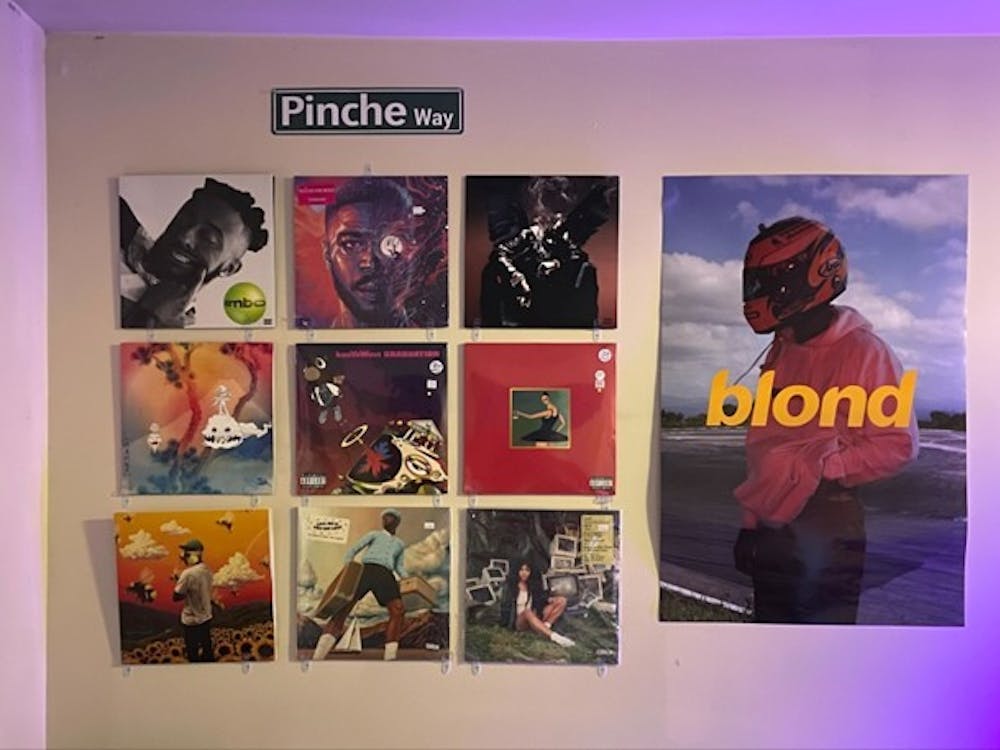Everyday our bodies interact with the built environment around us. We go through life with extensions of our body that allow us to do the most mundane and most difficult tasks.
Take, for instance, the journey students take to get to class. We walk across broken pavement. We open heavy-weighted doors to get into buildings. We walk briskly if we find ourselves running late. We walk up stairs to get to classrooms. We pull out chairs to sit on.
Now, try and imagine doing any of these tasks with a physical disability. Suddenly, that broken pavement may become a hindrance to getting to class on time. The heavy-weight door that isn’t compliant with the Americans with Disabilities Act (ADA) now becomes an obstacle. The short amount of time in between classes now shrinks significantly. The classrooms become limited, either having stairs to get to a desk or chairs unfit to suit your body.
I remember sitting in my room one night reading an excerpt from Sara Hendren’s book “What Can a Body Do?: How We Meet the Built World” for my power and oppression class. This is when my view on disability changed fundamentally.
“Who is the world designed for?” Hendren said. “Who, in turn, can grant or summon the power to do the designing or the building? And what can a body do — whether in life in our modest every day, or when conditions suddenly change? Let these be our restless and generative questions, each of us in our many bodies making and remaking this adaptive life.”
As an able-bodied person, I have rarely ever thought about how my body allows me to interact with the world around it. Like any other privilege — whether it be race, class, gender or sexual orientation — it’s allowed me to live a completely different life than those with a disability.
I have never questioned the infrastructure around me. I have never questioned whether my existence was valuable based on my body’s own ability to interact with the environment around it. This, I can acknowledge, is privilege.
Now, I am not an expert on disability activism or disability justice. I am an able-bodied person with only the knowledge I have gained in class or through my own research. I am still learning about what disability means and how it impacts people.
However, I find it important to start engaging in a conversation about disability at UP — especially those like myself who are able-bodied and can only benefit from hearing the lived experiences and stories of people living with a disability.
At one point in life, we will all be faced with a disability. This is not to say everyone is disabled. Rather, I ask you to recognize that the fight for a more accessible society is both a giving and receiving process. One in which we will each take a turn in occupying and one that needs urgent reform.
While the disability rights movement in the early 1970s led to critical policies that have significantly improved the lives of those with disabilities, it simultaneously excluded the experiences of those with intersecting identities — disabled people of color, immigrants with disabilities, LGBTQ+ people with disabilities, people with disabilities who are houseless, people with disabilities who are incarcerated and people with disabilities who have had their ancestral lands stolen, amongst others.
Disability justice takes an intersectional approach with 10 main principles. The framework functions under the focus of wholeness, intersecting identities like race, gender, sexuality, community and relationship, mutual aid, interdependence and collective access.
The goal of disability justice is to allow those with disabilities to achieve self-determination, inherent dignity and worth for all people.
The following are ways we can engage in disability justice thinking and how UP can make changes to fit this framework.
The built world is what makes people disabled
The ADA legally defines disability as a person with a physical or mental impairment that substantially limits one or more major life activities — walking, seeing, hearing, learning, speaking, breathing, standing, lifting or caring for oneself. This is a medical model for viewing disability.
Disability justice approaches disability with a social model that frames it as more of an interaction between environment and body.
A person's lack of accessibility to the built world is what produces the experience of disability. This is because the built world is formed around normative standards. This broadly shifts responsibility from the individual to society and allows us to widen the scope of disability to the environment.
The University of Portland’s Accessible Education Services (AES) page states that it “... [ensures] that students with disabilities have equal opportunity for participation in the University.” However, the school still largely contributes to the inability for disabled students and faculty to fully participate in the University.
They have created an environment that produces the experience of disability. For example, up until recently it continued to have an eight-story residence hall with only one elevator that had persistent issues, it has classrooms with staggered stairs and it doesn’t require teachers to have any training on how to make classrooms more accessible for those with learning disabilities and more.
I could go on, but I want to emphasize how the environment we live in plays a critical role in how other people interact with it. This is an experience that can be difficult, arduous and simply inaccessible.
This is not a problem specific to UP, as well. Many, if not all, college campuses in the US struggle to create infrastructure and access resources that is accessible to everyone. But there is a difference between acknowledging that a problem exists here at the University and actually facilitating change to improve it.
How powerful would it be if the university decided to make real change instead of being complacent in a system that perpetuates inequality?
“Normal” does not exist
We live in a world where the idea of normalcy is deeply ingrained in our collective cultural imagination. In the United States, a “normal” person would be one that is able-bodied. But why?
Nothing about our bodies are “normal.” There is no set mold for how our bodies are meant to act. We all have different abilities, different appearances and different ways our bodies function. So, why do we expect everyone to be able-bodied?
“Normal” was not used to describe human qualities in European languages until around 1804 when Belgian scientist Adolphe Quetelet introduced the notion of an “average man” — applying mathematical averaging to physical qualities of a person. The problem is that no one body is the same as another.
The predictive power in statistics is a helpful indicator for social scientists to help establish patterns and make observations of human behavior. However, ignoring the specificities of a matter can create a distancing effect. One that overlooks the value in the lived experiences of individual people.
In the same way that we enforce other norms — race, class, gender and sexual orientation — we must ask ourselves the following: Why are some considered “normal” and others not? Who dictates what is “normal?” How does this standard exclude others?
We expect accommodation to be enough, but is it?
For many, the response for the inequalities disabled people face is to expand accommodations. I thought this too. However, using accommodations for disabled people to reach self-determination and inherent dignity is like using a band aid on an open wound; it doesn’t actually address the real problem.
Accessibility does not equal accommodation. Accommodation is given to an individual with an individual need — it does not create accessibility to the space itself.
For example, an accommodation would be that a class is moved to a first-floor classroom for a wheelchair user. Accessibility would be having no classrooms that are not accessible by functioning, spacious elevators.
At the University of Portland, getting these accommodations isn’t that simple either. You must fill out extensive paperwork and have proof of your disability, a process that can take a lot of time and money which makes it difficult for those who don’t have easy access to those resources in the first place.
Once you get approved, the difficulty doesn’t stop there. At times, it could be the teachers that don’t approve of the accommodation on time.
Sophomores Kalli McDade and Dalynn McEwen both have been diagnosed with ADHD and use accommodations through AES.
It’s important to note both did not personally see their ADHD as a disability in the classical context. However, both wanted to be able to speak about the accommodation system from the perspective of someone with a learning disability. They both expressed similar concerns about the accommodations system.
For McDade, this has caused her to, at times, not have an alternative testing space.
“I tell my teachers beforehand, but I don't think AES looks at the form until your teachers can complete their part of the form,” McDade said. “I've had teachers who will do it a little bit later and by that time there's no space for alternative testing. Then I have to go through the form again to try to figure out where I can take my tests.”
For McEwen, she had to submit paperwork twice before the University approved her accommodation.
“I had to go through the whole process two times to get the priority registration which was frustrating,” McEwen said.
For her, this process dates back to high school when she was initially diagnosed. A process she has described as negative and frustrating. She still struggles today with navigating her ADHD in an academic setting.
“I was always very frustrated,” McEwen said. “I just couldn't learn anything. I just failed. It wasn't explained to me that how I learned is different. There were times where my brain couldn't take in information. I thought to myself, ‘Am I dumb?’ School has always frustrated me in that way. It's always a reminder that I am not what society deems as smart and/or normal.”
This point is not to discredit the people that work at AES or to urge the school to not expand accommodations. Both McEwen and McDade expressed how their accommodation has helped them significantly at UP.
Without the work of these people, it would be exponentially more difficult for students to be able to go to this University.
I simply ask we be critical on what exactly the school means when it says it gives its disabled students “full access and inclusion to University programs and activities.”
We need to support anti-capitalist policies
There is a direct link between our bodies and a capitalist “normative” level of production. The worth of someone is often linked to how much they are able to produce. This concept of “labor” is one defined by able-bodied supremacy, white supremacy and gender normativity.
If you are not able to participate in this system, you are deemed as less. This is because human worth is inherently tied to monetary value in capitalism. Before the ADA, disabled people were still largely discriminated against in the workplace and, at times, denied a place of employment.
True liberation and accessibility cannot exist within a system that upholds a normative standard and denies people a right to self-determination. We need reform — for some like me, complete abolishment all together.
The concept of higher education itself is inaccessible for disabled people. This is not to diminish the accomplishments of disabled students and faculty. Rather I ask, is an institution like UP ever going to be a liberating space for marginalized communities?
The university at its core is a “non-profit” institution that operates under the context of neo-liberal policies that are made for the efficiency of producing graduates to funnel money back into itself. It promotes private wealth accumulation for some at the expense of others.
These are all direct consequences of capitalism that promotes the cycle of oppression.
We often think of the cost of change as a reason to not solve the barriers that make this campus inaccessible. However, it does not absolve the school in its participation of oppressive practices.
Who is this world built for?
I find myself pessimistic about real change happening at this school sometimes. I often wonder if in the years after I leave, the same systems that oppress students, faculty and the community at large will still be in place. Everyday, it seems, I find out something new that makes me realize how deeply rooted a lot of these issues are.
However, I believe there is something powerful and important in engaging in conversations either in person or online about these topics. From the racism, sexism and tokenism of employees to the homophobia and transphobia students face, we need to keep talking.
If you have made it this far, I urge you to critically ask who is this world built for?
Kimberly Cortez is the Community Engagement Editor at The Beacon. She can be reached at cortez25@up.edu.
Have something to say about this? We’re dedicated to publishing a wide variety of viewpoints, and we’d like to hear from you. Voice your opinion in The Beacon.








